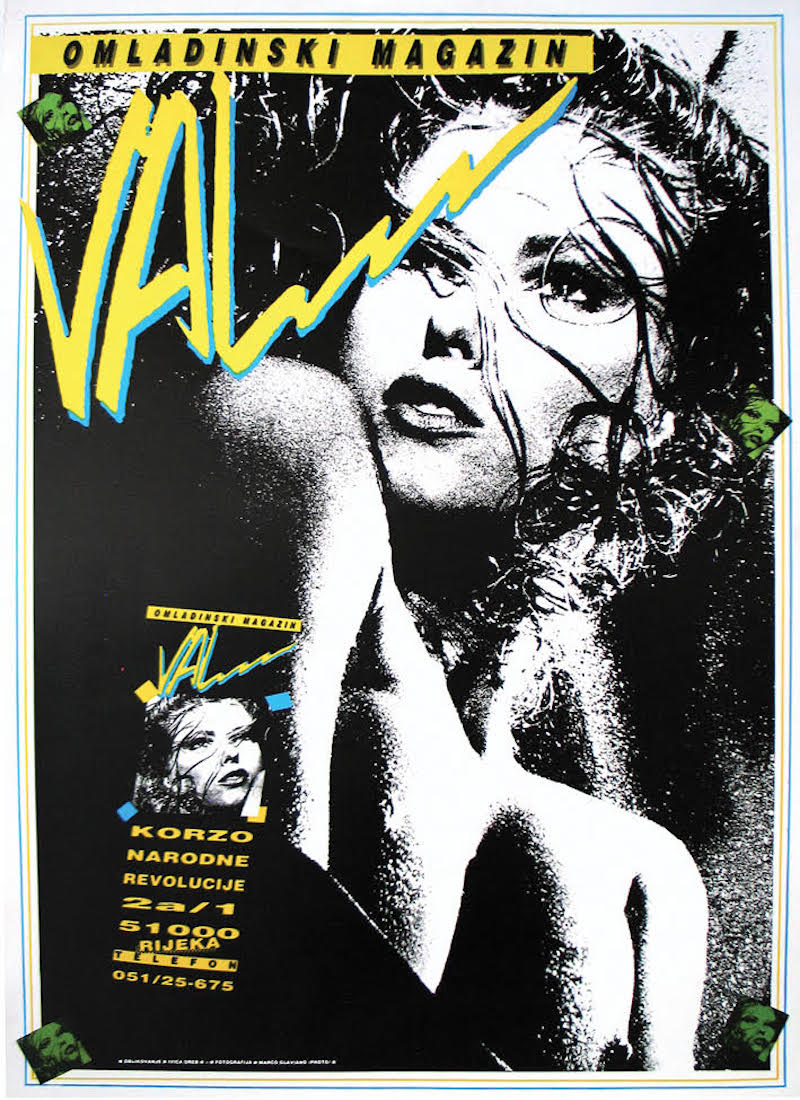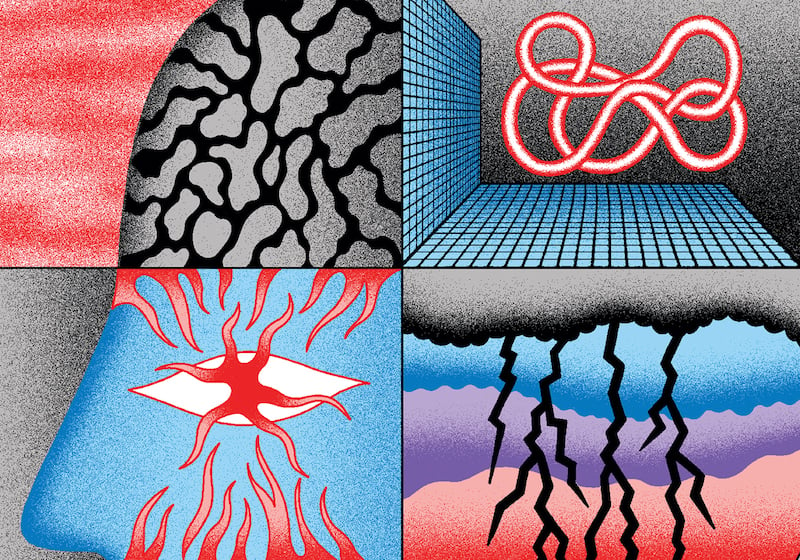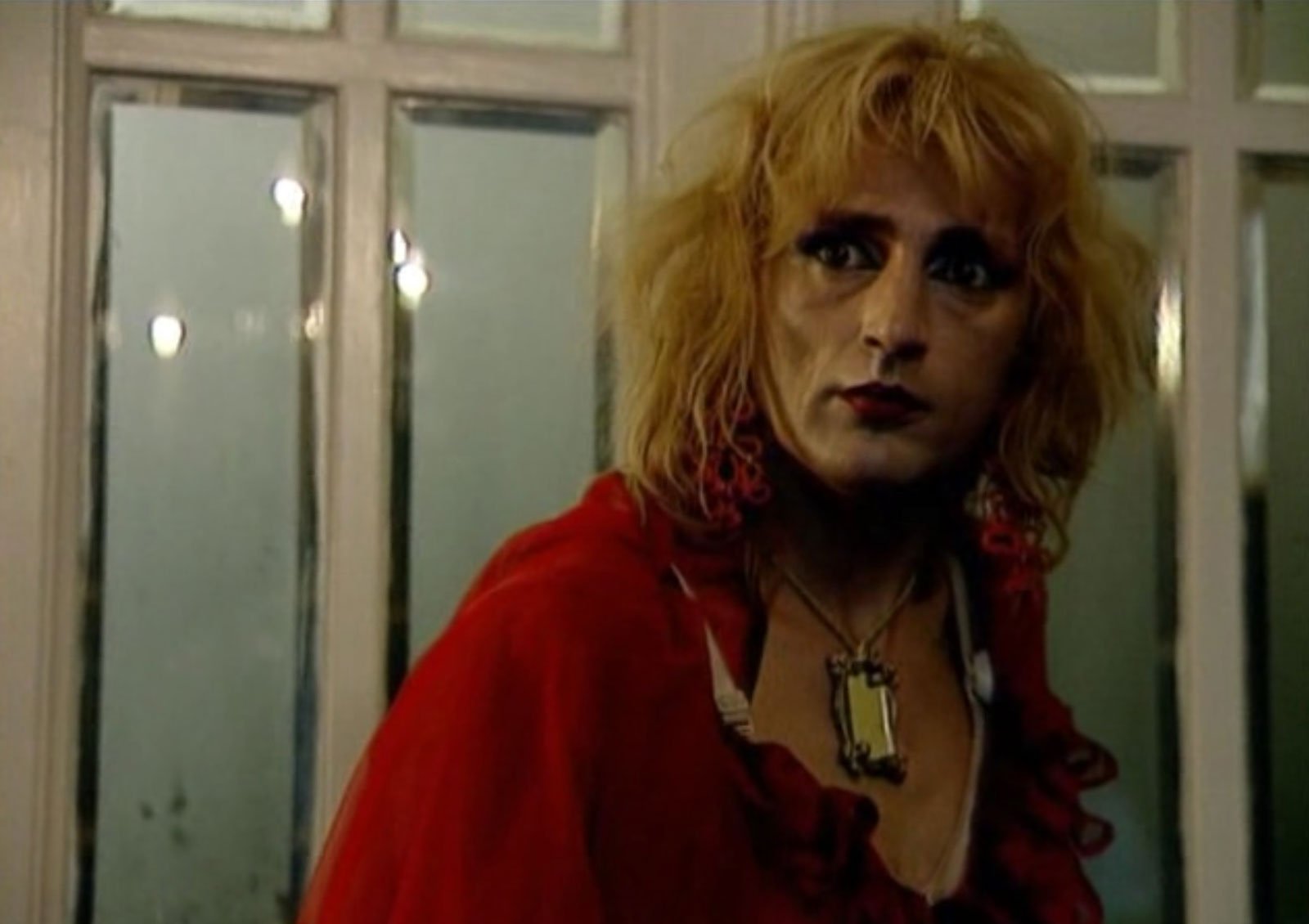Rock and Rijeka: how Yugoslav youth magazine Val changed one Croatian city forever
Edited in a tiny room with one telephone and five typewriters, youth magazine Val heralded a new wave of youth freedom and hard punk in the Croatian city of Rijeka — laying the foundations for more modern liberal and cosmopolitan values that persist even til this day.
Val may not have been the first Yugoslav youth publication to challenge the certainties of communist power, but it at least had the distinction of being the last magazine in Yugoslavia to be officially banned. “It was issue number 268 (in March 1989) that was impounded by the Croatian Supreme Court, due to its texts about Serbian nationalism in Kosovo,” explains Rijeka journalist Edi Jurković, a long-term contributor to Val who served as its editor from 1985 to 1987. “Val spent most of its time dancing on the edge of compliance with the system and satirical provocations.”
Re-exploring Val’s legacy is Jurković’s new book, Kad je život bio novi val, “When life was new wave”. It is a smart play on words which makes neat reference to the fact that the lifespan of the magazine, which lasted from 1976 to 1990, coincided with a new wave in popular music, and a new wave of ideas.
Even today, Rijeka’s reputation as a centre of alternative music and alternative attitudes remains a crucial part of the city’s character
The book itself offers an eye-opening account of everything that made the 80s such a turning point in Yugoslav history, a period when increased media freedom and an efflorescence of youth culture went hand in hand with economic crisis and political disintegration.
Edited in a tiny room with one telephone and five typewriters, Val was all the more significant because it was not published in Zagreb, Belgrade, or Ljubljana. Its home was the port city of Rijeka, the 3rd largest city in Croatia, and the 12th largest city in the then Yugoslavia.
Despite being perched on the periphery of Yugoslav life, a gruff port city that appeared culturally marginalised and didn’t even have a decent beach, in many ways, Rijeka was nevertheless central to the “new wave” to which Jurković’s title alludes. Even today, Rijeka’s reputation as a centre of alternative music and alternative attitudes remains a crucial part of the city’s character.
Val (or “Wave” in English) was established by the Socialist Youth League, an ostensibly party-controlled organisation designed to cultivate the loyalty of the nation’s young, and serve as a training ground for political careerists. The league also financed the publication of ideologically uplifting youth magazines up and down the country. But instead of conveying the party’s message, Yugoslavia’s youth press — including magazines like Val — ended up eroding it. While most of Yugoslavia’s daily newspapers remained loyal to local political bosses up until 1990, the country’s youth press broke free much earlier, exploring the boundaries of critical journalism and political satire at a time when “adult” media remained more cautious.
Rijeka bands Paraf and Termiti in 1980
Val was by no means the only trailblazer in this regard. Mixing pop with politics, Zagreb youth magazine Polet (“Zest”) was assiduously read throughout the whole of Yugoslavia. Slovene youth weekly Mladina (“Youth”) opened up many themes that the mainstream media considered taboo, and played a crucial role in Slovenia’s democratisation.
Val’s own potential for subversion was, to begin with, far from apparent. Its early issues were dully conventional, publishing news of youth work brigades, or reporting on the comradely benefits of doing one’s military service.
What changed things for Val was the arrival of punk. Rijeka just happened to be one of the first places in former Yugoslavia where punk took off — and it became Val’s job to capture the moment. The magazine became the mouthpiece for the city’s alternative culture – and the more Val’s journalists wrote about it, the stronger the scene became.
“It’s a fact that Val was the first magazine in the former Yugoslavia to champion the punk scene in 1977,” says Jurković. “By writing about the subversive lyrics of bands in Rijeka, we were inspiring a change in youth consciousness.”
Val found a talented music writer in the shape of Goran Lisica Fox, the young record producer and impresario who subsequently founded Dallas Records, a Ljubljana-based record label which currently sells records all over the former Yugoslavia. “One of the first articles I wrote for Val was my very negative review of Bijelo Dugme, a Sarajevo-based band who were the most popular Yugoslav rock act at that time,” says Fox. “I think the article was published shortly before punk flared up in Rijeka, probably in late 1976 or early 1977. At that time, it was already clear to me that there were two dominant notions in popular music in then Yugoslavia. There was one of mass-consumption exemplified by Bijelo Dugme (which we called “shepherds’ rock”), and another one, freer in spirit and structure, that was socially and politically engaged.”
Rijeka’s (and Croatia’s) first punk group, Paraf, was a case in point. Their work was full of corrosively ironic references to the system: “Narodna Pjesma” (“Folk Song”) famously declared the Yugoslav police to be the best in the world, while “Živjela Jugoslavija” (“Long Live Yugoslavia”) was one long pastiche of official slogans (including “Mi volimo liniju!” or “We love the [party] line!”). Another classic of the era was Termiti’s “Vjeran Pas” (Faithful Dog), whose refrain “U životu prolazi samo vjeran pas” (“The only way to get on in life is to be a faithful dog”) remains a sarcastic rallying cry to this day. Soon the city had given birth to a host of other bands; indeed Rijeka’s punk scene metamorphosed into a typical synthesiser-driven 80s pop scene, with keyboard-based acts like Denis i Denis, Xenia and the (all-female) Cacadou Look filling disco dancefloors all over Yugoslavia.
Val provided a visual chronicle of these pop cultural changes, its photographers documenting the city’s youth tribes and their dress codes. There are innumerable pictures of young Rijekans hanging out outside the cafe of the Kontinental Hotel, a cult meeting place where everybody would go to socialise and be seen.
The idea of Val as a document of its times had a lot to do with Edi Jurković’s ambition to complete the magazine’s transformation from erstwhile youth league bulletin into a full-blooded lifestyle magazine. Having first written for the magazine as a 15-year-old schoolboy in 1979, Jurković had gone to Zagreb in 1982 to work for rival publication Polet. He returned to Val in 1985, charged with injecting new energy into a magazine that had begun to stumble. “Val was at that time a little too hermetic; it was selling badly, and I wanted it to be read. I persuaded the publisher to give me a free hand, and transformed the magazine into what we called “Yugoslavia’s first youth tabloid”. The texts got shorter, and we included a lot more photographs. I opened the magazine up to different opinions: we kicked the red star off the front cover and put young models on it instead.”
Val was also making its own significant contribution to the local artistic scene, with culture editor Mladen Urem setting up an offshoot literary journal called Rival, and a publishing arm dedicated to local contemporary writers. “The generation of writers who came to maturity in the 80s included an incredible number of talented individuals. My intention was to present this new literary scene, a scene which had a modern sensibility and a new sense of freedom,” says Urem. He used Val as a platform for international cultural exchange. “I wanted to build bridges between cultures so I published a lot of international work in Rival, and also sent a lot of Croatian writings to literary journals abroad.”
Band Cacadou Look in the mid-1980s
Jurković took a step back from the editor’s chair in late 1987 in order to concentrate on finishing his studies. His successors, Davor Štimac and Bojan Mušćet, continued to develop the pop-plus-politics recipe — although with Yugoslavia’s economic and political woes becoming ever more pressing, it was politics that increasingly played a dominant role.
With different Yugoslav republics increasingly adopting different strategies to deal with the crisis, political debate became increasingly fragmented. Croatian magazines such as Polet and Val were beginning to write critically about Serbian communist strongman Slobodan Milošević at a time when the Croatian communist party was still nervous about taking Milošević on. When Val sent journalists to the troubled province of Kosovo to report on clashes between Serbian police and ethnic Albanian demonstrators for the now famous issue number 268, the Croatian political leadership had the entire issue impounded.
Unfortunately, it was not the bold spirit of openness fostered by Mladina, Polet and Val that became the dominant motor of change as communist Yugoslavia began to fracture, but a new sense of hermetic nationalism which had little use for liberal journalism. Youth magazines in the republic of Serbia had either been extinguished or subjected to strict controls following the seizure of the party by Slobodan Milošević’s nationalist hard-liners in 1987. Zagreb’s Polet and Rijeka’s Val disappeared from the stands not because of political diktat, but because there was no longer any money to publish them. In the post-communist landscape, the idea of a state-funded youth magazine was one of the first socialist concepts to bite the dust. Indeed, the only Yugoslav-era youth magazine which still survives today is Slovenia’s Mladina, whose weekly mix of hard journalism and withering satire continues to be a thorn in the side of power.
“One of the last articles I wrote for Val came out at the beginning of 1990,” says Jurković, “when it was clear that a transition from communism to capitalism was about to take place. It was about how company directors would simply change their coats, use their position and their contacts, and carry on working in privatised companies and for their own profit. Which is how things turned out.”
It was not the bold spirit of openness fostered by Val that became the dominant motor of change as communist Yugoslavia began to fracture, but a new sense of hermetic nationalism which had little use for liberal journalism
The staff of Val did in fact try to surf the wave of change themselves, launching a newspaper called Ri Telefax (“the first private daily newspaper in Eastern Europe,” Jurković states) in October 1990. The onset of war in 1991 brought the experiment to a close.
But in the 30 years which have since passed, Rijeka has preserved its reputation as something of an avant-garde, open, and cosmopolitan enclave in a country that frequently shows outsiders a conservative face.
Back in Val’s heyday, Rijeka was a busy shipbuilding town with a large working class; punk rock and rebel attitudes somehow went together with the city’s mixture of muck, grit, and industrial pride. Now, it is a post-industrial city in the throes of reinventing itself as a city of culture and innovation. The tendency to look back admiringly at the Rijeka’s new wave heritage is more than mere nostalgia; it’s an important building block in the reconstruction of the city’s image.
A young artist known as Desi is pictured in Val in 1981.
That desire to be different could be found in Rijeka’s stint as European Capital of Culture, which opened in February 2020 with an ear-splitting avant-garde noise spectacle entitled Opera Industriale, a gleefully unforgiving summation of the city’s abrasive charms.
In fact, perhaps it is unsurprising that the chief of communications for Rijeka 2020 was none other than Edi Jurković himself. “After such a spectacular opening, the project really did experience a sad fate because of Covid-19,” he admits. “But a lot of important things have come from this, such as the new City Museum, the Museum of Modern and Contemporary Art, a new library, and also a unique floating exhibition space in the shape of the Galeb [President Tito’s restored former yacht]. Regardless of the reduced programme, a lot of people wrote positively about Rijeka in global media outlets, and that will, I believe, attract urban tourists in the long term.”
For many of its former writers, Val’s role in shaping the city remains incalculable. “Look at the large number of journalists, writers, and artists the magazine cultivated,” says Mladen Urem, now a leading expert on literary history and chief archivist at the State Archives in Rijeka. “These people had a formative impact on establishing Rijeka as a cultural centre. They were people of unquestionable talent, they played a significant role in the democratization of society, and the promotion of tolerance as a basic precondition for the development of civil society.”
“The impact of Val was huge”, agrees Goran Lisica-Fox. “Val was the locomotive of the music explosion in Rijeka. And writing about punk and new wave meant writing about the desire for change in society as a whole. Rock music in Rijeka had always been strong, but with the punk and new wave bands we wrote about, rock music became a kind of cultural trademark. Today Rijeka has the image of being the rock capital of the whole ex-Yugoslav region, and the most liberal city in Croatia.”




